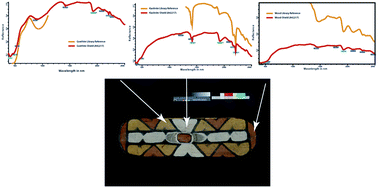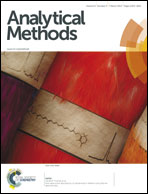HyLogger™ near-infrared spectral analysis: a non-destructive mineral analysis of Aboriginal Australian objects
Abstract
Cultural heritage materials from Indigenous cultures often use geological raw materials such as natural rock and mineral pigments. For analysis, these complex human-altered materials require high-resolution, non-destructive methods, and in the case of intricate designs, a point-by-point analysis and mapping capability is desirable. The CSIRO Australia HyLogger™ technology has been adapted from mineral exploration and mining applications to the high-resolution non-destructive infrared and visible light spectroscopic mineral analysis of Aboriginal Australian objects. Aboriginal Australian people primarily applied mineral pigments such as hematite and kaolinite to wood, fibre, bark, resin or other organic substrates, making non-destructive in situ scientific analyses of cultural objects challenging. This proof of concept study demonstrated the utility of the near-IR technology for the visual and mineralogical analysis of six Aboriginal Australian objects, of varying size and pigment application, as case studies for the development of methods to identify and differentiate types of mineral pigments regardless of the substrate or binder. While many identified pigments such as hematite and goethite were expected for the red, orange and yellow pigments, HyLogger™ in combination with The Spectral Geologist™ software identified additional mixtures of previously unknown mineral components. White minerals, such as calcite and pyrophyllite, were identified along with kaolinite in mixtures in white pigments on the artefacts. Analyses of individual spectra were used for interpretation of spectral features for specific pigments. Additionally, classes of pigment groups were identified for spectral analysis. This manuscript presents the novel application of the near-IR technology to Australian Aboriginal artefacts for characterisation and high-resolution near-IR spectroscopy of applied mineral pigments. These results challenge and add to prior knowledge about the mineralogical composition of traditional Aboriginal Australian inorganic pigments.


 Please wait while we load your content...
Please wait while we load your content...